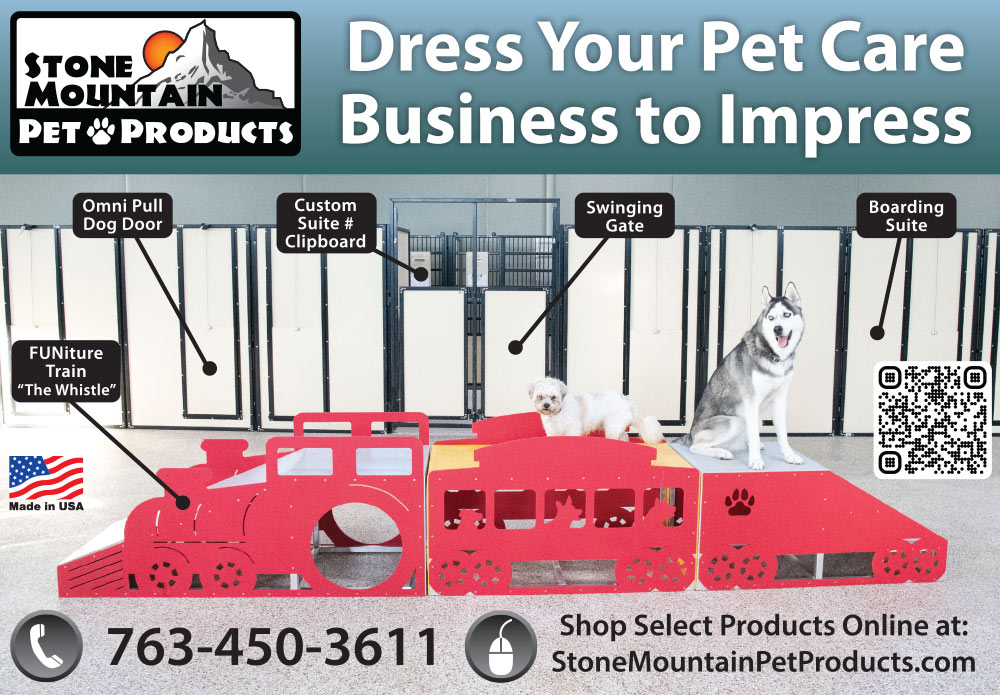
 hy is it important for pet groomers to know a little bit about brachycephaly? Well, short-faced dogs are extremely popular as pets, therefore making them frequent customers of groomers everywhere. And because of their physical structures, specific health concerns can be significant during the grooming process.
hy is it important for pet groomers to know a little bit about brachycephaly? Well, short-faced dogs are extremely popular as pets, therefore making them frequent customers of groomers everywhere. And because of their physical structures, specific health concerns can be significant during the grooming process.
Brachycephaly means “short head,” and a variety of purebred dog breeds fit this category. No one list labels them all because the variation of shortness can be significant and is not always agreed upon by all experts. Pugs are a typical example of what is referred to as a “flat-faced” breed, with their super-short muzzles, deep face wrinkles and large, front-facing eyes. On the other end of the spectrum are Cane Corso, which are also considered brachycephalic, although they have a much longer muzzle.
Between the two extremes are a variety of different breeds. Some sites suggest as many as 24 breeds that fall into this category, and there is an assortment of mixed breeds that could be classified as short-headed as well. A quick overview of some of the breeds commonly considered to be brachycephalic include, Boxers, Shih Tzus, Cavalier King Charles, Boston Terriers, French Bulldogs, English Bulldogs, Pekingese, Bullmastiff, Chow Chow, Japanese Chin and, of course, Pugs.
Brachycephalic dogs can be prone to various health concerns, including malformed teeth and jaws, spinal problems and occluded airways. However, what is of most concern to us as pet groomers is their proneness to overheating. One pet insurance provider article I read stated that brachycephalic pets are 2.9 times more likely to have submitted claims for heatstroke than dogs with more typical anatomy. And, if a short-headed pet is overweight, it is more likely to become overheated.
Some dogs in this category also have a condition called brachycephalic obstructive airway syndrome (BOAS). This occurs when the soft tissue of the upper respiratory tract doesn’t have enough room due to the shorted skull.


Even brachycephalic pets that breathe without a struggle under normal conditions need special care while being dried to maintain proper body temperature. Using heated cage dryers on brachycephalic pets can be dangerous. Because their airways are not as efficient at cooling as those of their longer-snouted brethren, short-headed dogs are at a real disadvantage when they are placed into a cage that is soon filled with air that is not only warmer than the surrounding environment, but also has high humidity content from water evaporating off their bodies.
Here are some safe and appropriate drying techniques that should be practiced with short-headed dogs:
- Remove as much moisture from the coat as possible while the dog is in the tub by first using super-absorbent towels, then allowing the dog to shake water off themselves as much as possible and, finally, using thirsty terrycloth towels to remove even more water.
- Use products that help the coat to dry faster.
- Table-dry using low- or no-heat dryers. This ensures that the dog is in an open area with cool air to breathe.
- If you must cage-dry, use dryers without heating elements (they still warm the air a few degrees higher than room temperature because of their motors) or, better yet, use a box fan that will move room-temperature air over the pet.
- Only open cages with wire sides should be used for cage-drying.
- Only cage-dry when the pet is in direct view of a staff member.
- Mount thermometers on each cage so you can tell at a glance if the temperature is safe.
- Provide the pet with a bowl of cool water while it is being cage-dried. (Yes, the water may get spilled, but that is a small thing compared to the dog’s safety.)
- Never use a stand dryer as a cage dryer. Stand dryers are designed to reach far higher temperatures than cage dryers (some go as high as 130 degrees Fahrenheit) and should only be used in open spaces.
- Never cage-dry any animal wearing a muzzle. A muzzled dog cannot pant freely and is more likely to overheat.


Veterinary advice should be sought if any dog is panting excessively, flattening its tongue as it pants, has dark or bright red gums, blue or gray gums, dry or sticky mucous membranes in its mouth, is staggering, is weak, collapses, or shows any signs of respiratory distress. Be sure to keep a rectal thermometer in your first aid kit and know how to use it if you suspect a dog is overheated. The average, normal temperature for dogs is 101-102.5 Fahrenheit.
Brachycephalic dogs, with their enchanting, infantile faces, are irresistible to many people and are wildly popular as pets. Groomers need to be aware of potential health concerns associated with these dogs to keep them safe, comfortable and healthy when we care for them.
- Brachycephalic obstructive airway syndrome: much more than a surgical problem. Vet Q. https://www.ncbi.nlm.nih.gov/pmc/articles/PMC9673814/
- Brachycephalic Research Shows Body Condition Is Key To Thermoregulation. Purina Pro Club. https://www.purinaproclub.com/resources/dog-articles/health/brachycephalic-research-shows-body-condition-is-key-to-thermoregulation
- The Cost Of Cuteness: Health and Welfare Issues Associated with Brachycephalic Dog Breeds. HSVMA. https://www.hsvma.org/brachycephalic
- What Is a Brachycephalic Dog? Southeast Veterinary Neurology. https://sevneurology.com/blog/brachycephalic-dog/


